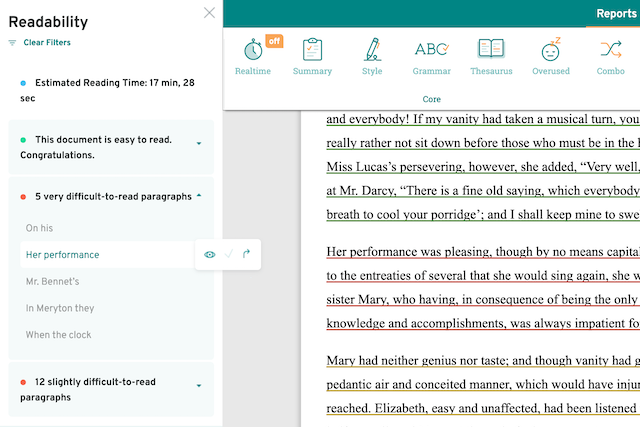
I wouldn’t be much fun in Vegas.
Why? Well, I’m too risk-averse. And in an environment built around risking your money to make more money, I probably wouldn’t thrive.
However, you’ll find a contradiction here. Because as much as I avoid risks with money, I love taking them in my writing.
When is it wise to do something risky with your writing? When might you not want to? Let’s discuss.
Writing Is Art, Not Science
We all know that, of course. Yet there are so many books, podcasts, and videos out there that would have us believe otherwise. They assure us that if we follow a certain formula, our stories will "work." And yes, it’s true that some storytelling structures (Save the Cat, three-act structure, Hero's Journey) have been proven to have more commercial appeal.
By deviating from these guidelines, you’re probably taking a risk. If you write a non-linear story, for example, like Emily St. John Mandel‘s Station Eleven, you’re taking a risk. You’re acknowledging that there’s a certain way most books are written, and you’re writing yours in a manner that might not appeal to all readers.
Yet Station Eleven is a very successful and popular novel, in large part because of the risks taken in writing it. So how did this book succeed, despite its deviations from established narrative norms?
It’s because the book’s risky business (its non-linear style) wasn’t done on a whim. It was done with purpose, and executed well. We learn how certain important items make it from one time period to the next. We find that a particular pair of younger and older characters are actually the same person. And we discover that characters we never knew were related are actually connected by blood. It’s moments like these that make St. John Mandel’s risks not just complementary—they’re essential.
Risks Must Be Taken for a Reason
Anyone can shoehorn non-linear narrative, second person point of view, surrealistic imagery, and more into their work. But that doesn’t necessarily improve the story. Every risk should be taken for a reason.
For example, take my favorite novel, American Gods by Neil Gaiman. The book’s main plot is a traditional story: third person, past tense, linear progression. However, there are numerous side stories scattered throughout. It took me several reads before I fully grasped the purpose of these side stories, and how they fit into the larger narrative.
Gaiman took a risk by adding these stories. He gambled on his readers’ interest in stepping away from the main thread, if only for a few pages at a time. But I’d say that risk paid off, and was therefore worth it. He wanted to explore more of America than just the experience of his protagonist. The side stories did that, and so much more.
Could Your Writing Be Riskier?
If you find yourself uninterested in your ideas or you feel they’re unoriginal, maybe you’re not taking enough risks. Maybe you’re clinging too firmly to convention when you could be exploring something new.
If this sounds like you, I suggest setting aside time for imaginative play. This is a term I learned from Jeff VanderMeer’s Wonderbook, and I think it’s excellent. Imaginative play means creation for the sake of creation. Don’t concern yourself with logic or purpose. Just write. Just create. Revision comes later.
Creative play is intrinsically risky because, frankly, you might never use what you create. Yet it’s important because it trains your mind to know that risks are okay. It’s okay to think outside the box and devise ideas that defy the expected. The more you practice creative play, the more risks you’ll be willing to take. And, eventually, you’ll find risks that improve your stories.
Is Your Writing Too Risky?
If readers describe your writing as "hard to follow" or "out there" (and neither in a good way), maybe you’re actually taking too many risks. Maybe you’re going for future tense when past tense would be more accessible. Maybe you’re convoluting a plot just to add complexity when your story really needs a straightforward progression.
If that’s the case, take a lesson from cooking.
It’s risky to cook without a recipe. However, the results can be surprisingly tasty, and they’re undeniably you. But how do you get there? You start by learning the basics first.
The same is often true for writing. Most writers can’t write a coherent non-linear story until they’ve learned linear storytelling. Most writers can’t pull off risks unless they also know how to play it safe.
So, if you suspect your writing has become a little too risky, try simplifying things. Conventional stories can be just as satisfying as unusual ones, if done properly. Also, you’ll need to play it safe at least some of the time, or else readers won’t have familiar handholds to grasp.
In Closing
Whether you’re in Vegas or not, risks are part of life. They can be part of your writing, too, if you allow them. And, when employed properly, they can enhance your work.
The One Thing You Shouldn’t Risk: Your Spelling and Grammar
Taking risks when you’re writing is freeing, but it also takes a lot of thought. You might be so caught up in your perspective or timeline that your grammar, spelling, and style starts to slip. With ProWritingAid, you can take risks with your ideas while knowing that the technical side of your writing is safe.
ProWritingAid not only offers you spelling, style and grammar suggestions while you write, but also allows you to check your pacing, readability, sentence variety, repeats, and more to help you ensure that you can engage your readers with your big ideas, not lose them.

Ready to take risks in your writing without risking your readers?

